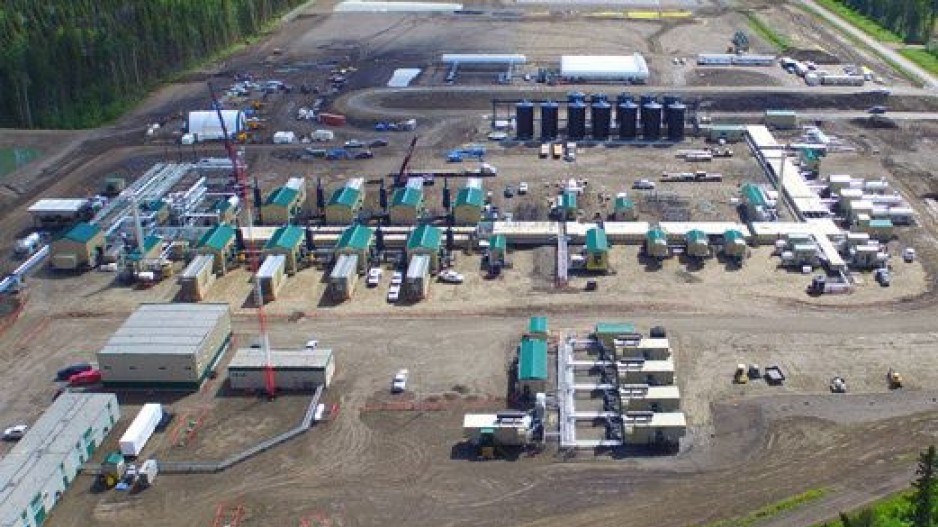Whether it’s fish or forestry products, environmentally conscientious buyers will often look for sustainability certifications, like the Forest Stewardship Council label for wood products or the Marine Stewardship Council for seafood.
More and more, utilities are also now demanding higher standards for “responsibly sourced” natural gas using relatively new validation and certification tools and brands.
And according to these certifiers – as well as a study published in Nature’s Scientific Reports - natural gas produced in B.C. should be able to command a low-emissions premium, simply because it comes from B.C.
Pacific Canbriam Energy, an Alberta producer that operates exclusively in the B.C. Montney formation, recently received certification from Equitable Origin, which provides ESG (environmental, social and corporate governance) certification for energy companies.
It is the second Canadian natural gas producer to receive Equitable Origin's EO100 certification. The other is Seven Generations – another major player in the B.C. Montney – which merged with ARC Resources Ltd. (TSX:ARX) earlier this year in an $8 billion “strategic Montney combination.”
The certification was part of what is being billed as the “first-ever” responsibly sourced gas supply agreement in Canada, under which the Quebec natural gas utility, Energir, will source natural gas from Pacific Canbriam.
Pacific Canbriam will also be the natural gas supplier for the Woodfibre LNG plant in Squamish.
The certification considers all ESG metrics, and one of them is greenhouse gas (GHG) emissions intensity.
Natural gas produced in B.C. tends to have a much lower emissions intensity than natural gas produced elsewhere in North America. Part of that is just pure chemistry. Natural gas in the Montney formation simply has a lower carbon content than gas from the Horne River basin, for example.
“The gas that’s coming in from the Montney is just incredibly low in CO2 content,” said Rebecca Scott, a spokesperson for Pacific Canbriam. “By its very nature, it’s a low carbon content.”
Thanks to an electrification drive in B.C., some of the natural gas processing – which traditionally used natural gas itself to power processing plants -- runs on clean hydro electricity.
More importanty, however, methane emissions from both the Montney and Peace regions are “extremely low,” according to researchers at St. Francis Xavier University.
“Emission intensities varied widely for natural gas production, where older, low-producing developments such as Medicine Hat, Alberta showed high emission intensities, and newer developments in Montney, British Columbia showed emission intensities that are amongst the lowest in North America,” says a study, published in Nature’s Scientific Reports.
One source of methane emissions in natural gas extraction is from “blowback” from well completions. In B.C., this has been largely eliminated, by regulation and best practices, with “green completions” or flaring.
“Our measurements showed average site-level emission rates in Peace River decreased nearly three-fold from (from 2016 to 2018)… which suggests that these new regulations are resulting in significant mitigation success in this area,” the St. Francis Xavier University study found.
Operators in B.C., like Pacific Canbriam, also have reduced road emissions by using pipelines to transport both water and natural gas, which takes a lot of trucks off the road.
But the gas that Pacific Canbriam produces moves to Eastern Canada along the Canada Mainline mainline, which also moves a lot of natural gas from other producers in Alberta and Saskatchewan. How will Energir know that the gas it receives is actually from Pacific Canbriam, and not some producer in Alberta?
Under the agreement signed with Energir, a service provided by a company called Xpansiv uses real-time data to identify the physical gas from Pacific Canbriam to produce a digital certificate that verifies that the gas Energir receives matches the gas shipped from its EO100-certified suppliers.
“That means that, even if we can’t actually follow the molecule from Pacific Canbriam to Quebec, we will inject the exact quantity of natural gas Energir buys from us and Energir will distribute the same amount through their system,” Scott explained.
(This story has been corrected. Xpansiv is headquartered in San Francisco and Sydney, not New York.)




